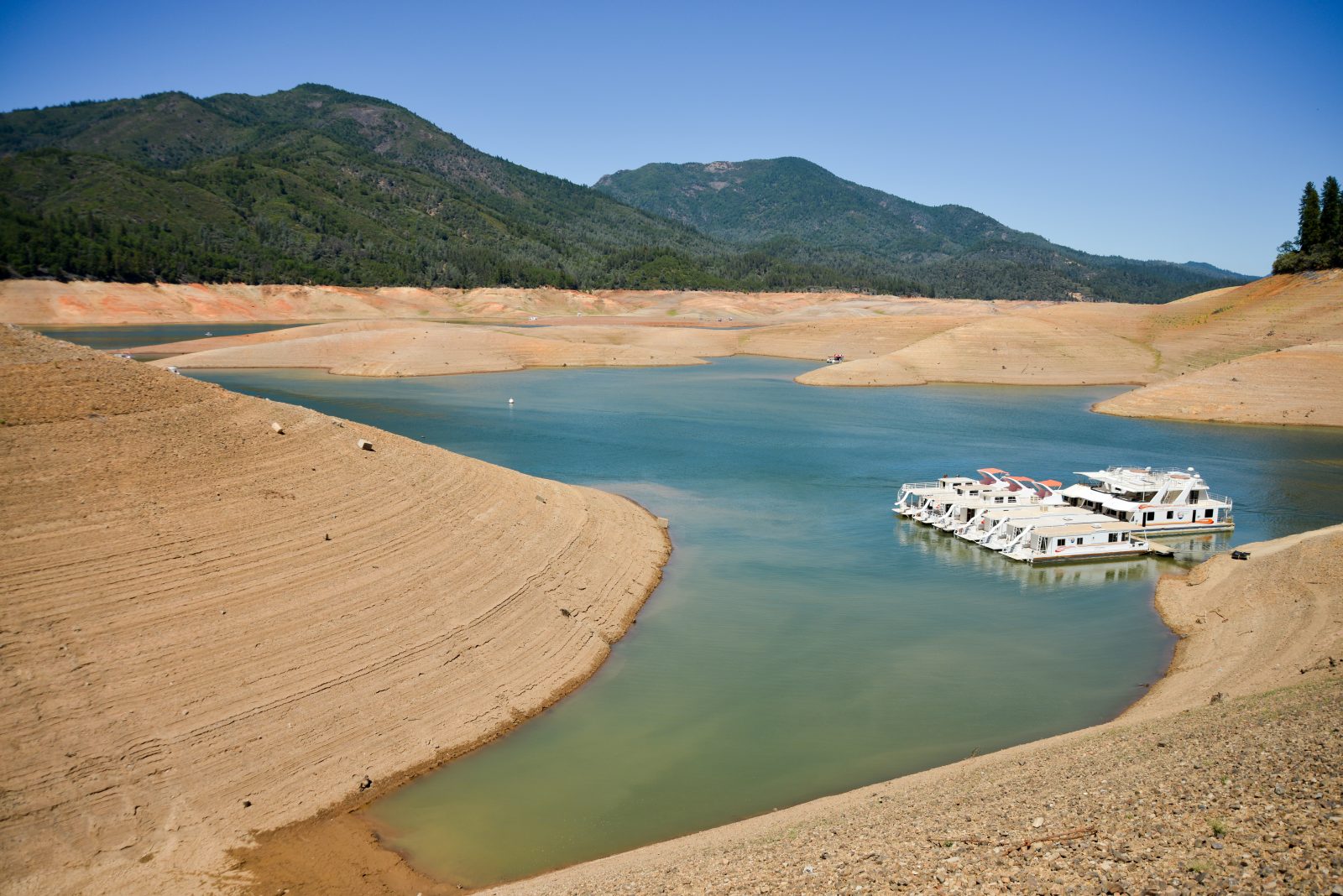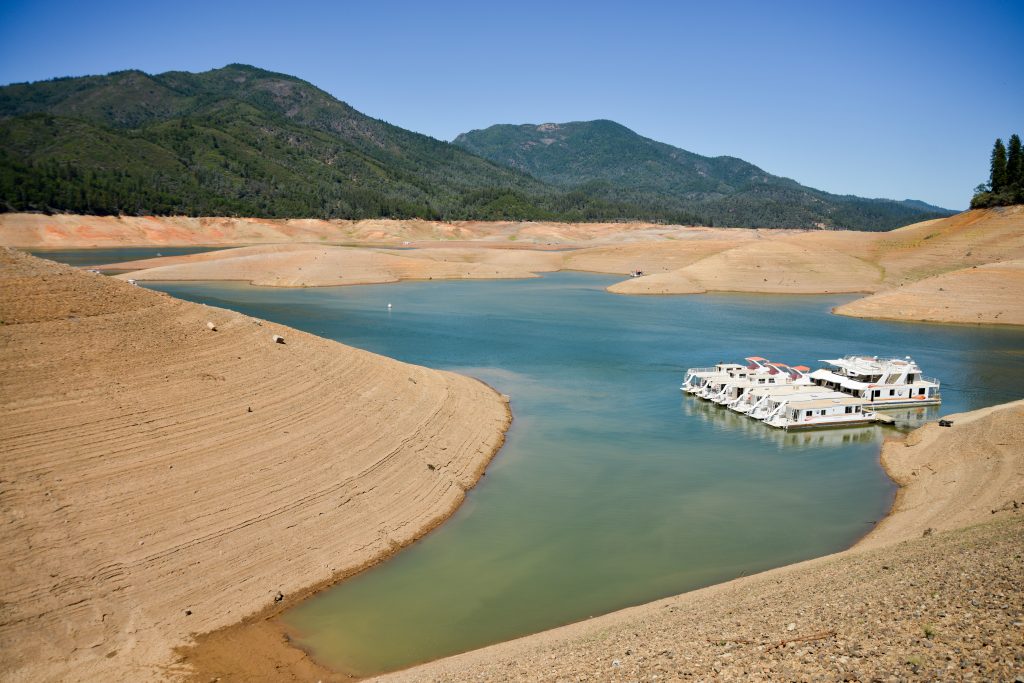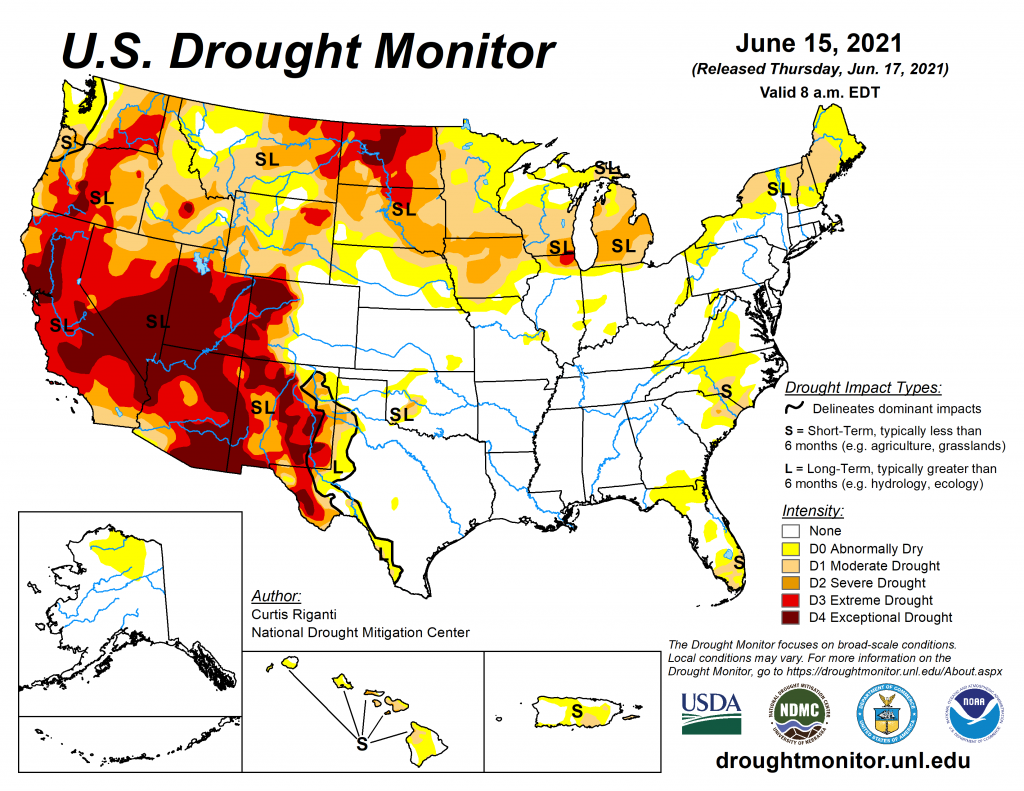Defeating Drought


Dry times are inevitable, writes Eric Herman; and, at present, all indications are that much of the Western U.S. is in the early stages of what looks to be a severe drought. That’s why, he says, the sooner we face the reality of ever-increasing demand for freshwater and dwindling supply, the sooner society can push back against the potential horror and disaster of water shortages.
By Eric Herman
The Western U.S. is already in the clutch of a potentially extended drought — exactly what “extended” might mean is anyone’s guess. Using past droughts as a model, it could be anywhere from four to six years. There are climate models that indicate a far longer drought lasting more than a decade is not out of the question.
I don’t mean to sound alarmist here, but reservoirs and the precious Sierra snowpack are at near record lows, and it is still only June at this writing. Make no mistake, this not just California, Arizona and Nevada that are being impacted. Severe to exceptional drought conditions exist in parts of Oregon, Utah, New Mexico, Texas, Colorado, Wyoming, Idaho, Montana, Nebraska, North Dakota and South Dakota, with abnormally dry conditions in parts of at least another dozen states.
Whether or not you attribute droughts and ever-intensifying fire seasons that go along with them to climate change, hopefully we all can agree that extended periods with below-average precipitation are inevitable. History tells us they always come to an end, and they will always come again.
TAKE IT ON
That’s why I personally believe it’s long past time to face the situation squarely for what it is, with critical thinking skills fully deployed. We know that drought will always happen in the Western U.S. and many other regions prone to warm temps and high-barometric pressure ridges, because for as long as we’ve been keeping track, it always has.
We know that water is essential for the existence of all humans, and the tens of millions of people who live in drought-prone regions are subject to shortages, as are all forms of farming, and manufacturing. Virtually nothing, including oxygen, sunlight, or the work of bees pollinating crops is more important than water. Just like the food we eat and the air we breathe, we die without it.
Water supply issues touch everyone in some way or another, starting with critical shortages that impact roughly 1.5 billion people worldwide. Even in industrialized nations, we see unsanitary conditions requiring boil-your-water edicts or warnings due to contamination from stuff like lead leeching from ferrous plumbing.
Historically, water supply issues have been the defining factors in the development of the entire western U.S., because of its scarcity coupled with the desire to live in places like Phoenix, Las Vegas, and Los Angeles, where tens of millions of people live in metropolitan areas and suburbs that would not exist were it not for water transported in from hundreds of miles away.
Ergo, commonsense would seem to dictate that we need to develop more reliable sources of freshwater that do not rely on precipitation in semi-arid climate zones. While there is no one magic-bullet, it seems obvious that a big part of the solution could be desalination, and probably by way of reverse osmosis on a mass scale.
Yes, I am arguing that we turn to the oceans (while at the same time we stop contaminating them, a sweeping topic for another day). According to the USGS, the oceans of Earth contain 321 million cubic miles of water or, and you don’t see numbers this big every day, 352 quintillion gallons of water, that’s 352 followed by 18 zeros, literally “exponential.”
For all of that H20, only approximately 2.5% on our planet is non-saltwater, including clouds, groundwater and ice, and only 0.76% exists as “freshwater,” i.e., the stuff we use to drink, grow crops, cook, flush our toilets, manufacturer countless goods – including steel, plastic and almost all forms of medicine – wash our clothes, water golf courses and fill swimming pools.
In developing nations experiencing continuous shortages, small desalination plants driven by solar power have worked on an extremely small but effective scale. So, yes, we should look to the oceans, but it only works if we can affordably and efficiently convert saltwater into freshwater. The knock against desalination has always been that it consumes a lot of power needed to generate the required pressure.
This is why developing an RO membrane that requires less pressure is kind of a holy grail in the world of filtration technology, something akin to developing lightweight batteries.
MANY WAYS
Some of the possible solutions that can possibly move the needle toward greater water security, are far less obvious. I recently read a study published in Science Daily by researcher and hydrologist Roger Bales, a professor at U.C. Santa Cruz, outlining a fascinating and surprising idea that could positively impact a number of important environmental and resource issues.
He writes: “As engineers working on climate-smart solutions, we’ve found an easy win-win for both water and climate in California with what we call the ‘solar canal solution.’ About 4,000 miles of canals that transport water to some 35 million Californians and 5.7 million acres of farmland across the state. Covering these canals with solar panels would reduce evaporation of precious water, and help meet the state’s renewable energy goals, while also saving money.”
Sounds outlandish? Covering canals with solar panels would reduce contamination, requiring less treatment, it would not require dedicating land to solar farms and because the panels would be cooled by the water flowing beneath them, they would become more efficient.
I can’t help but wonder, is it too much of a reach to imagine that some of that renewable power could be used to drive desalination plants?
That’s just one idea. Depending on the source you read, nearly 90% of water consumed by society in California is used to irrigate crops. That can be interpreted to mean agriculture has the most to lose by limited water supply, a problem being borne out with current cuts to some regions of the state, but the most to gain by conserving water. Unfortunately, it’s not that simple.
On one hand, there are lots of ways farming can become more water-wise including soil amendments, field leveling to reduce puddling, drip irrigation, soil temperature monitoring, and turning to drought tolerant crop species, to name a few. The problem with all of these measures is they drive up the cost of growing food, and farmers have don’t see immediate economic incentive to invest in saving water.
My thought is we positively motivate commercial agriculture to invest in water-saving technologies through tax breaks based on capital expenditures. Again, just another crazy idea, or is it?
(In an upcoming discussion, we’ll look at a nifty relatively new type of farming that dramatically reduces water usage while increasing plant production, and it uses all sorts of technologies found in other applications, like pools and ponds.)
WATERSHAPING INTERESTS
It should be self-evident that an industry that exists to bring water into people’s lives in the form of pools, spas, fountains, ponds, streams, waterparks, etc. should be acutely aware of broader water-resource issues.
In times of drought, there’s always the litany of restrictions imposed on constructing pools, filling and refilling, and watering landscaping, all of which directly impacts those who make their living creating outdoor spaces that include bodies of water. The industry counters that pools and spas use little water compared to grass and they are unfairly targeted as symbols wasting water.
It’s a cyclical set of polemics that are as ingrained as drought itself. Everyone plays a part in water conservation, moving the meter one way or another. It’s my humble view that our industry should be looking inward, providing solutions for home owners who want water in their backyards, and their communities. There’s a familiar list of water-saving technologies: pool covers and moveable flooring to minimize evaporation, variable speed pumps to lower power requirements, solar heating, skilled water treatment to reduce drain and refill regimens, and on the landscape side there are xeriscapes and artificial turf, among other measures.
Conversely, the presence of water in homes and commercial settings elevates the importance of water in the minds of consumers. In the sense of “Blue Mind”, as described by author Wallace “J” Nicols, the arts and crafts of watershaping are a component of the larger world of water and water awareness. Unquestionably, recreational and decorative water provides an “aquatic emissary” function, with the innumerable benefits to our physical and mental health.
Because freshwater is so indispensable, so essential to our survival, as well as our economy, wouldn’t it be great if there was more of it to go around?
Image attribution: Lake Shasta, Calif. at record low water level. Photo by David Greitzer, Shutterstock.com










